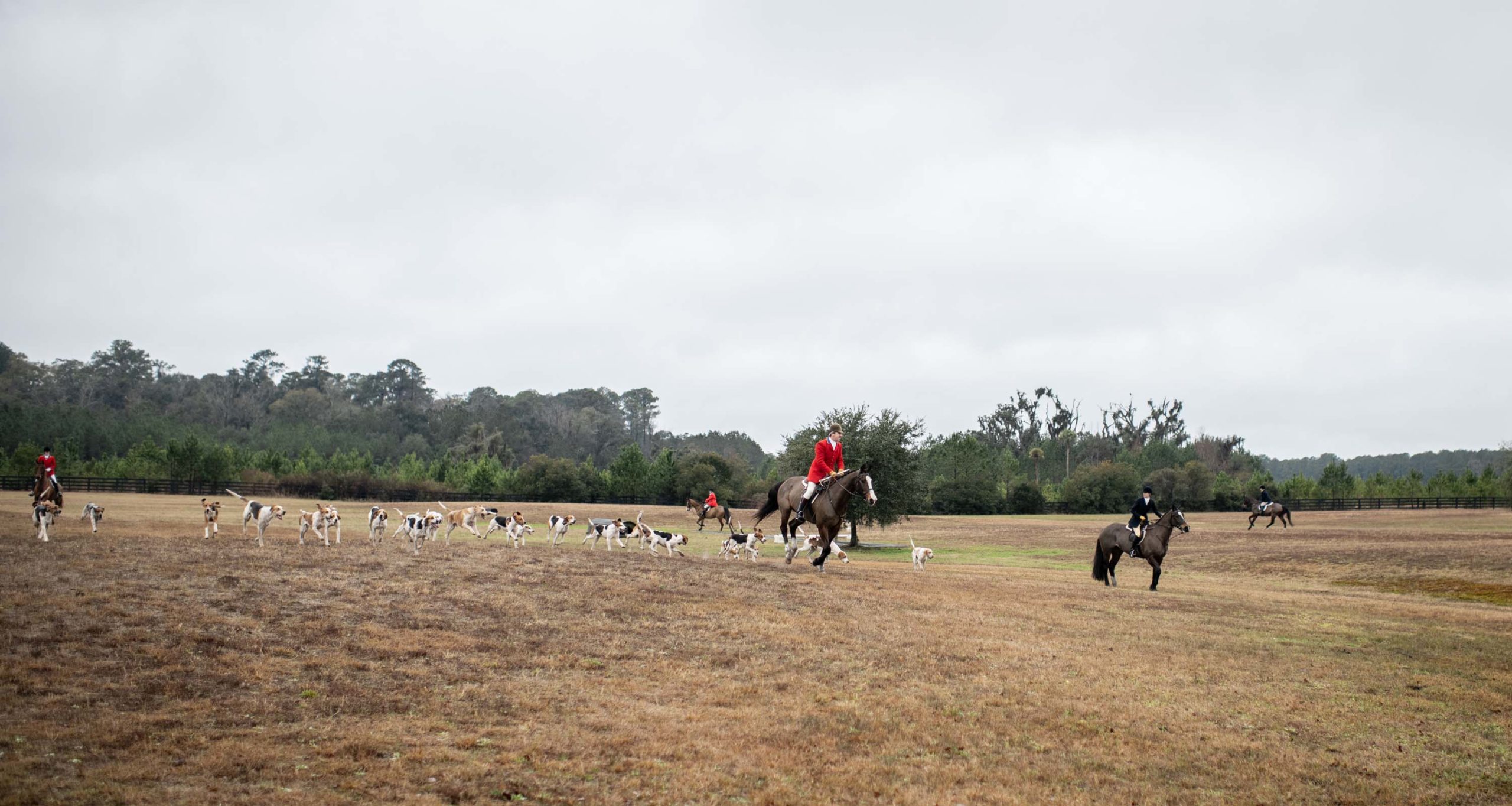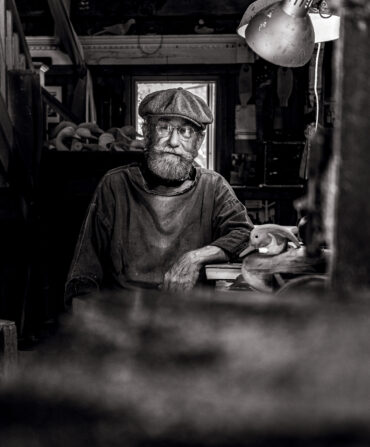Land & Conservation
The Thrill of the Chase
South Carolina’s Palmetto Bluff plays host to an English sporting tradition with a Southern spirit
Sponsored Content


Photo: Courtesy of Palmetto Bluff
In coastal South Carolina, midwinter delivers one of Palmetto Bluff’s most highly anticipated events. Field + Fire, this year January 31 to February 2, is the private community’s annual celebration of sporting heritage, from shooting and fishing to sporting art and Southern cuisine. During one of the weekend’s cornerstone events, centuries of tradition coalesce into a display like no other as skilled participants present an exhibition foxhunt—where the focus is solely on the chase, not the capture. Read below for a dispatch from the field, where the sport’s longstanding customs meet a few modern updates.
Under cloudy skies and the constant prickling of raindrops, the gently rolling hills of Palmetto Bluff’s Longfield Stables take on the storybook quality of a Yorkshire meadow. It’s the perfect setting for a classically English tradition: the foxhunt.
As head of Lowcountry Hunt, Nina Burke addresses the small crowd assembled under a tent to watch the day’s proceedings. Ninety members strong, her South Carolina–based outfit organize foxhunts up and down the ACE Basin region (the area bounded by the Ashepoo, Combahee, and Edisto Rivers) and is presenting today’s exhibition. Burke is on hand to give a master class in the history of both the sport and the hunting group itself, and the spectators drink in her wisdom, all eyes on the horses galloping past beneath steely skies.
The action begins with a signal from huntsman Tony Gammell, assembling his pack of twenty-five American foxhounds via a staccato blare from his horn. As he rides forth, Burke explains how the country’s first pack of foxhounds were given to George Washington by Revolutionary War hero Marquis de Lafayette. The hunt soon thunders past the tent, ducking in and out of the trees and encircling the far fields of Longfield Stables while Burke narrates the action. “The two whippers-in keep the hounds close to the huntsman,” she notes. Each wave of riders contributes to the chase.

Photo: Courtesy of Palmetto Bluff
The practices of Lowcountry Hunt echo the grand traditions of the sport. The organization’s masters and huntsmen all wear ceremonial red jackets, confusingly known as pink coats for the London tailor (Thomas Pink) who first sewed them. But each group has its own colors on the collar, and Lowcountry Hunt’s were chosen to reflect South Carolina’s agricultural heritage: blue for indigo and gold for Carolina Gold rice. Despite the organization’s respect for tradition, today’s event is a testament to its ability to breathe new life into a centuries-old sport. For example, it’s safe to say the eighteenth-century cavalry wouldn’t have allowed a young girl to join in, but upon seeing eight-year-old Sophia Mauldin gallop across the field, it isn’t hard to imagine her riding circles around them. “She used to hunt in diapers,” Burke says. “I’ve been with her the whole time.”

Photo: Courtesy of Palmetto Bluff
A young hunter takes to the field.
Although its gatherings are normally held on private estates, Lowcountry Hunt visits Palmetto Bluff regularly, taking advantage of the preserve’s rugged terrain. “We won a national award for wildlife habitat conservation in 2009, so we always try to partner with people who are interested in that,” Burke says. Preservation is central to the group’s philosophy, and another way it parts from tradition. In fact, no foxes are actually harmed during these hunts; for American foxhunters, the thrill is in the chase.
“Red foxes will lead the hounds through ponds, up across the top of a fence. It’s all a game, and when they’re finished, they’ll run back to their den,” Burke notes. “In England, they’d send the terriers in to kill the fox, but we don’t do that here. When it goes to the ground, we just say, ‘Bye, see you another day.’”
A similar respect for nature is what made Tony Gammell a natural choice for huntsman when he joined in April of 2018. “The hounds love him,” Burke says. “They get treats and tennis balls when he’s around.” Gammell often says he enjoys nature far more than a simple trophy. “I’ve never in my life shot a fox. I actually like them,” he says. “Sometimes we beat them, but they beat us sometimes, and it’s like, ‘Good on you, man.’”
In this case, “beating” a fox simply means chasing it to ground or up a tree. Beyond the foxes, however, the teeming wildlife that calls the Lowcountry home only adds to the fun. During a hunt, it’s not uncommon for the hounds to pick up the scent of an armadillo, a bobcat, or even a wild hog. But for Lowcountry Hunt, it’s less about the prey than the spectacle of the day, organized to revive the sport and pageantry of a bygone era. “A lot of people come out for the rides, but a lot of them come out to take in the beautiful setting,” Gammell adds. “Wherever we go, we just try to leave it better than we found it.”
Click here to book an experiential stay at Palmetto Bluff.
Dispatch adapted from a story by Barry Kaufman for Palmetto Bluff







